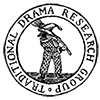This paper will examine the dramaturgical aspects of a corpus of Mende folktales about the spider trickstar figure, Kasilo. Folklorists and anthropologists have noted the portrayal of this figure in other African and African American communities. Its humorous but almost criminal obsession with contriving often outrageous plans for personal gratification has been widely noted and commented on in published collections and scholarly treatises. There has equally been no dearth of comments on the dramaturgical aspect of the performances of these folktales. The mimicry and role playing, the vocal modulation, especially the assumption of the strident nasalised voice – a physiological condition that is culturally associated with scheming individuals – the prominent gestures and body movements and the whole range of expressive motions have been noted. These dramaturgical features not only render breadth to the delineation of character and enhance the rhetorical effect of the performances, they also provide important intertextual links with social and cultural perspectives engendered in preceding re-enactments of stories and other generic forms which depict this well-known figure. In performances, the audience and the performer visibly engage in role playing and negotiations on the delineation of the character as well as the social and cultural significance of the spider trickster figure.
The argument for greater attention to the dramaturgical features of these performances also critiques the reification of controversial scholarly practices in Folklore Studies whilst suggesting that this approach can constitute a complimentary way of perceiving the nature of verbal art. As pointed out above, dramaturgy can foreground not only the interaction between performer and audience but can also index the spatio-temporal dimensions of the performance. Current research in Folklore has indicated interrelationship of form, function and meaning and that the text as we know it is not a self-contained sequential stream of speech but marked and open-ended discourse which can both refer to itself and be an object of discussion. The notion of "every telling is a new telling" indicates that indexical features are unique to different performances. In essence, every retelling is a recontextualisation of discourse. The dramaturgical features with its variation in the formal and functional sense are central to this recontextualisation process.
As examination of the dramaturgical features of the performance of these trickster folktales has implications for current scholarly practices. Proponents of the ethnopoetic approach have fervently argued for a dialogical as opposed to an analogical trend in research methodology in Folklore and Anthropology. The argument has not been justified in the practice. I would argue though that the issue of authenticity usually conflicts with the persistent scholarly authority which emerges no matter how much effort is made to blur it out buy disclaimers. Recent works by leading folklorists have insisted that fieldwork and analysis is and has been a projection of social power since the Grimm brothers undertook their seminal collection of folktales. The tape recorder and the tape recording, it is further argued, is often reified as an "authentic" record of the performance and this is also reflected in transcriptions. Pertinent questions of who can perform what, how and when, and the relationship between the performer, the audience and the researcher can be blurred out with just a consideration of the auditory features of performance. The dramaturgical features of these performances foreground both auditory and gestural features as well as the interaction of the performer with the audience and his performance. I will therefore contend that a recognition of the dramaturgical features of performance may have positive implications for a resolution of this controversy as it constitutes a justification for reviewing and fluxing out the remit of current scholarly practices.
